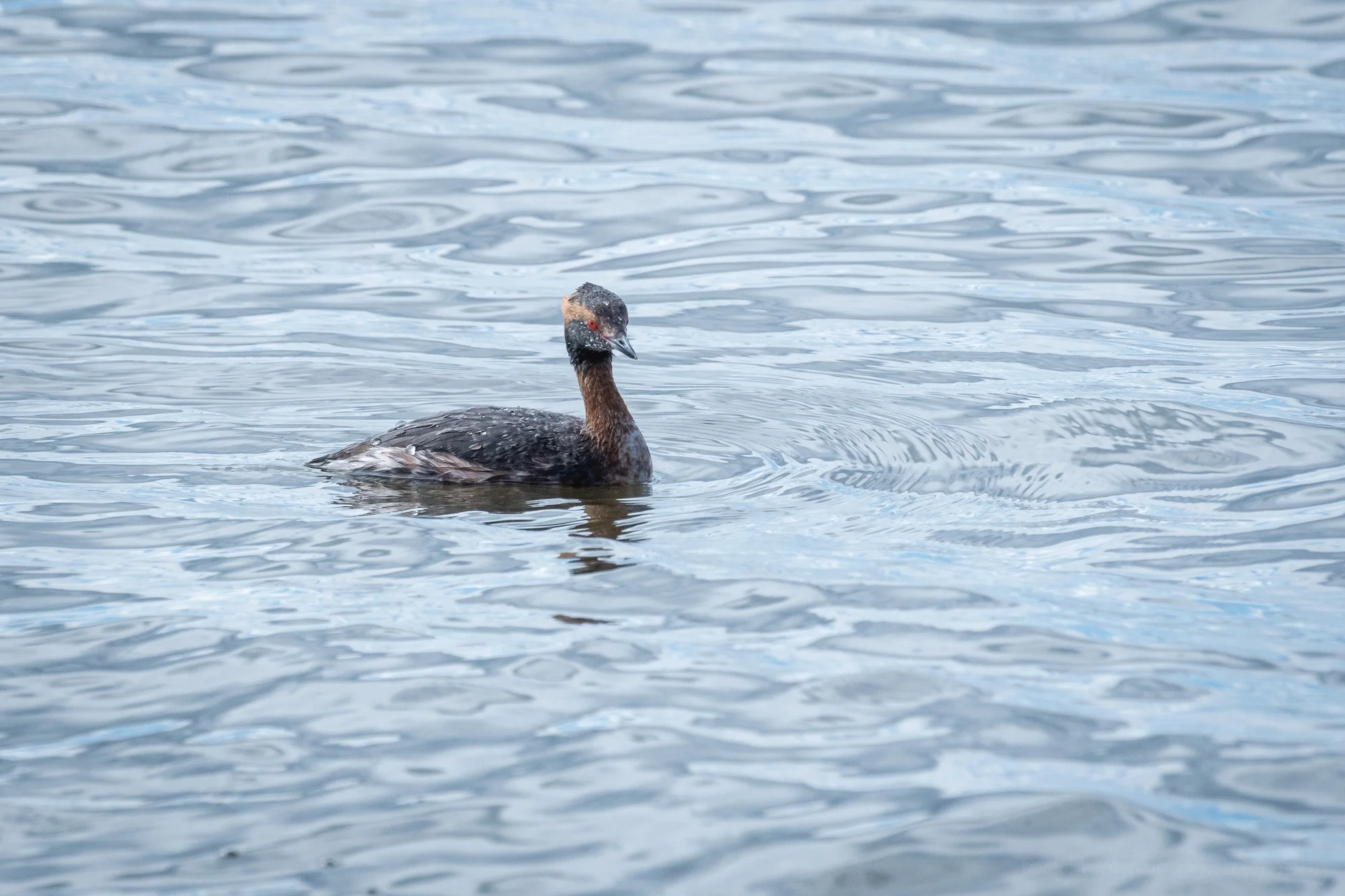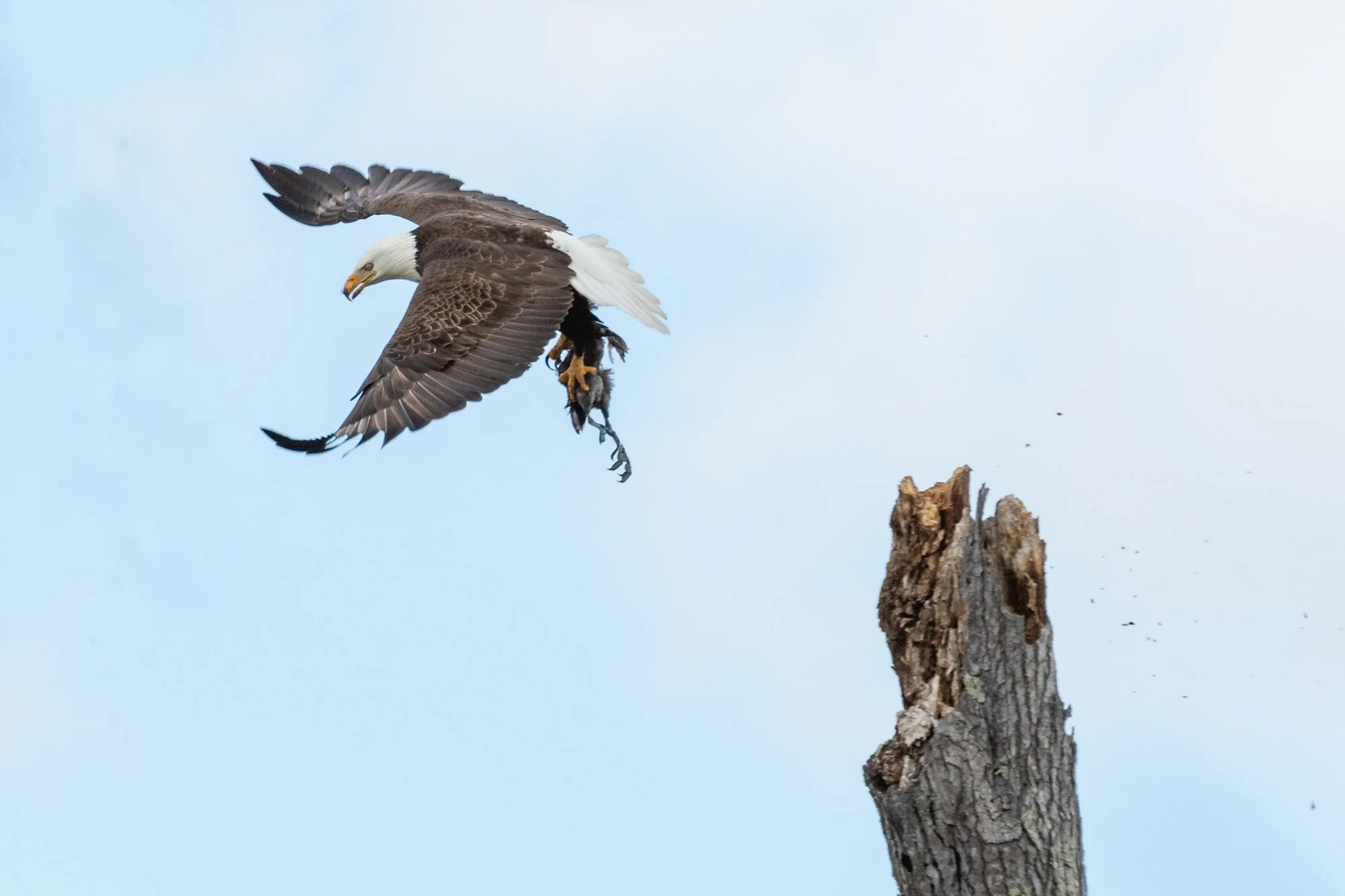I’m continually fascinated by all the life we so often overlook. We plant flowers and watch them grow, admiring their beautiful buds, but we often miss the small insects that make these plants their home or feeding ground.
One afternoon I decided to photograph the hibiscus flowers, but quickly began noticing the little bugs crawling over the plants. So I pointed my macro lens at the insects and continued shooting, having a great time exploring their closeup world.
Long-legged Flies
A Long-legged Fly on an hibiscus leaf.
Top down view of an iridescent, metallic looking Long-legged Fly.
I caught movement on the leaves of an hibiscus and noticed a fly, but different from typical house flies. These are Long-legged Flies, and are considered beneficial by gardeners as they feed on some of the pests in gardens, such as spider mites and aphids. I love their iridescent metallic sheen. Even flies can be beautiful.
Spotted Cucumber Beetles
A Spotted Cucumber Beetle with hibiscus pollen on its legs.
A Spotted Cucumber Beetle eating the hibiscus pollen off its front legs.
Facing the Spotted Cucumber Beetle.
Next up I found a Spotted Cucumber Beetle feeding on hibiscus pollen. Grains of pollen were all over its legs, and a couple pieces were even stuck to its antennae. This beetle is considered a garden pest as it eats the leaves of many agricultural plants. In this particular case, though, perhaps it may help pollinate the hibiscus.
Notice the yellow grains of pollen of the hibiscus flower.
Looking closely inside the hibiscus you can see the grains of pollen.
Versute Sharpshooter Leafhoppers
Versute Sharpshooter Leafhopper on an hibiscus leaf.
Moving in closer to the Versute Sharpshooter Leafhopper.
Versute Sharpshooter Leafhopper on the edge of an hibiscus leaf.
Last up was a very interesting insect, a Versute Sharpshooter Leafhopper, with stripes of green, orange, and cyan. They get the name leafhopper because of how they hop around the leaves. The sharpshooter part is apparently due to the small holes they create when plunging their mouthparts into leaves to extract the sap. Because of how they feed and what they feed on they are considered a garden pest.
I hope you’ve enjoyed this short excursion among the insects frequenting the hibiscus in the garden. What sorts of insects have you found around your flowers and garden plants? Are they beneficial or pests?
Do you enjoy these posts?
Sign up to receive periodic emails with updates and thoughts. Don’t worry, I won’t spam you. And please consider purchasing artwork or products from my online store, and using my affiliate links in the sidebar to the right when shopping online.
I appreciate your support!



























